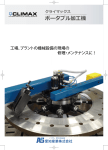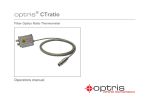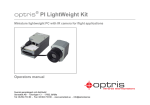Download STAND-BY POWER SUPPLY TROUBLESHOOTING METHOD
Transcript
STAND-BY POWER SUPPLY TROUBLESHOOTING METHOD 1. IN LOW VOLTAGE MODE • discharge capacitors CP062 and CP013 • shunt resistances RP016 through RP020 with a 10k 1/2 W resistance • power up the frame with a 12VDC input applied through the mains socket The following situation should ensue: C1 period 49.767 µs C1 Freq. 20.09342 kHz TP020 collector 1• Ch 1 2.00 V M 10.0 µs C1 period 49.543 µs Unstable histogram TP020base C1 Freq. 20.18449 kHz Unstable histogram 1→ Ch 1 2.00 V M 10.0 µs C1 period 51.439 µs Unstable histogram TP020 emitter C1 Freq. 19.44036 kHz Unstable histogram 1• « 8 VSB» = 2 Volts «13 VSB» = 3,5 Volts Ch 1 2.00 V M 10.0 µs NB. If nothing happens, disconnect the collector of TP020 and check the presence of about 2V6 at the cathode of the Zener diode DP019. This method also works if transistors TP021/023/026 are removed. The signals are significantly dampened in case the "8 VSB" or "13 VSB" is short-circuited. 2. IN NOMINAL VOLTAGE MODE (220 VAC) • remove module VM4000 to force the permanent working of the STAND-BY power supply The following situation should ensue: C1 period 17.310 µs C1 Freq. 57.77009 kHz TP020 collector 1• Ch 1 « 8 VSB» = 8 Volts «13 VSB» = 13 Volts VERIFICATION • Check whether TP026 is not short-circuited 9.90 V M 10.0 µs










